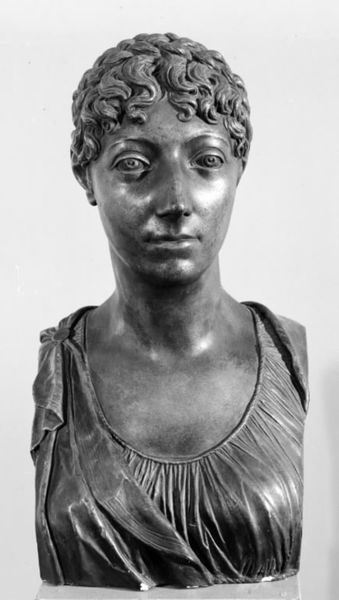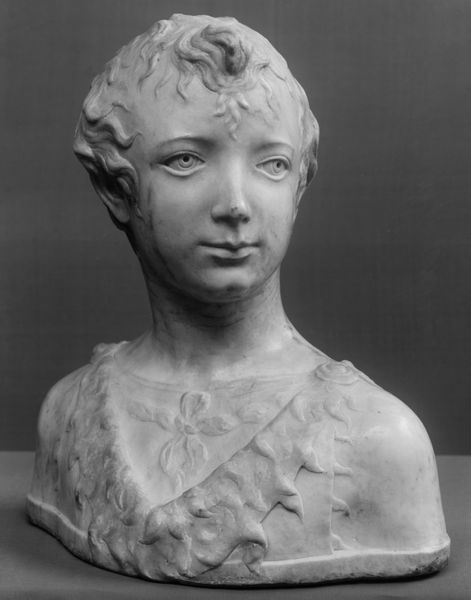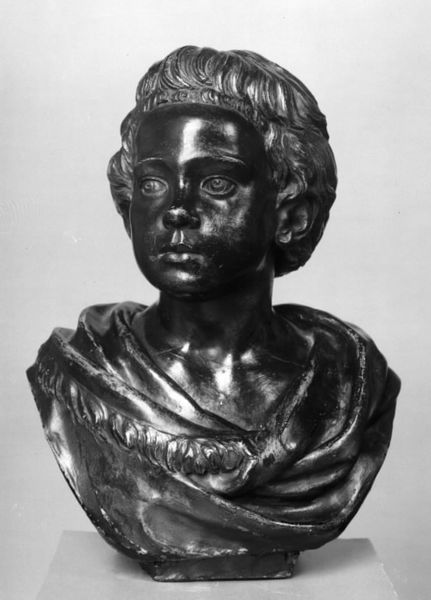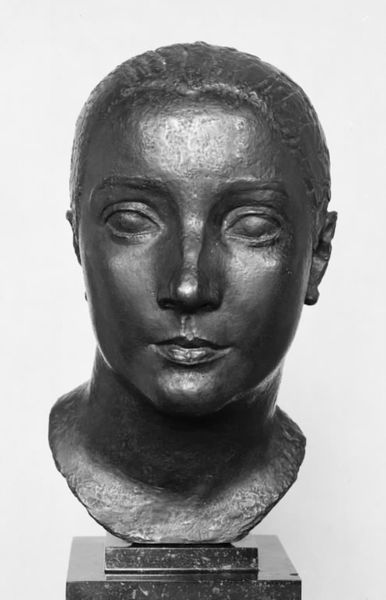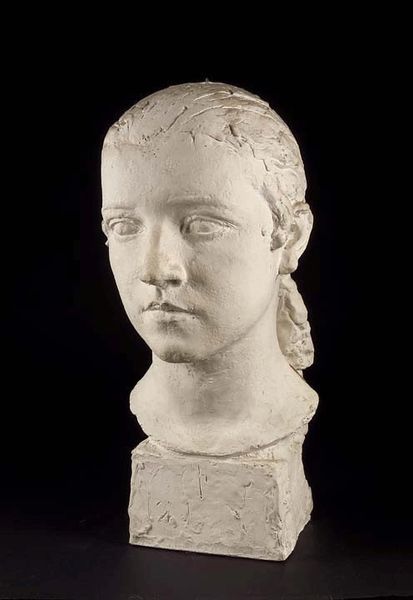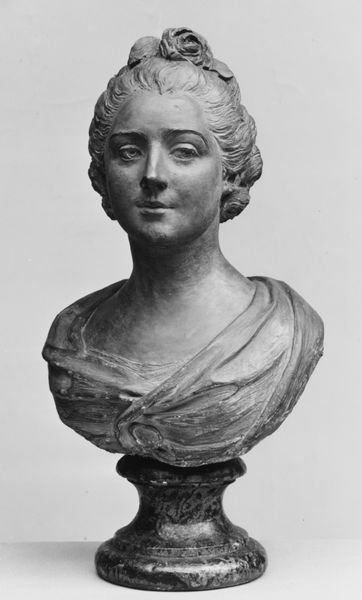
sculpture, marble
#
portrait
#
neoclacissism
#
portrait
#
form
#
sculpture
#
marble
Dimensions: 41 cm (height) (Netto)
Editor: This is a marble bust entitled "Nicoline Petræa Wilhelmine Lindencrone" by Giovanni Domenico Gianelli, created around 1801. There's something both idealized and very real about the subject; she feels incredibly present. What symbolic language can you find in this work? Curator: What strikes me is how Gianelli subtly merges Neoclassical ideals with a palpable sense of individual personality. The cool marble, the idealized features, all point towards the aesthetic values of the time – a reverence for antiquity. But look at the girl’s eyes; do you see that hint of melancholy? This bust, perhaps commissioned to immortalize her youth and beauty, inadvertently captures a fleeting moment, an emotion that transcends the cold stone. The draping of the garment also alludes to classical forms. Consider the tradition of the sculpted portrait; whose stories were deemed important enough to carve in stone? Editor: So, it's not just about likeness; it's about constructing a narrative? Who "deserves" to be remembered? Curator: Precisely! Think of the visual cues Gianelli uses: the careful curls framing her face, the gentle slope of her shoulders. These aren’t just artistic flourishes, they speak to her status and character, presenting her to posterity. Can we really see 'her', or only a projection? Consider what visual traditions would disappear as new aesthetics arose, for better and for worse. Editor: I hadn't considered the implications of that interplay before – the dance between personal expression and societal expectation in portraiture. Thanks, that’s a great insight. Curator: A pleasure. Perhaps we can better understand ourselves through reflecting on those that came before, one symbol at a time.
Comments
No comments
Be the first to comment and join the conversation on the ultimate creative platform.
